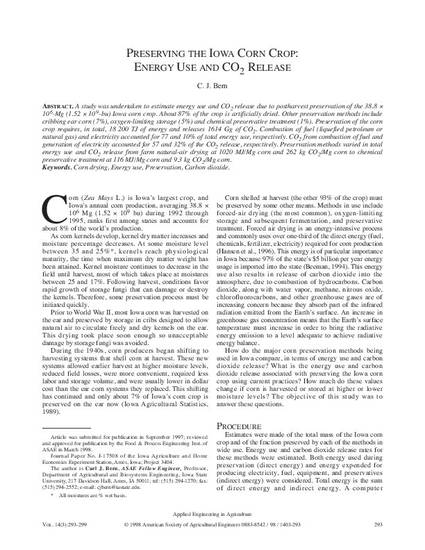
A study was undertaken to estimate energy use and CO2 release due to postharvest preservation of the 38.8 × 106-Mg (1.52 ×109-bu) Iowa corn crop. About 87% of the crop is artificially dried. Other preservation methods include cribbing ear corn (7%), oxygen-limiting storage (5%) and chemical preservative treatment (1%). Preservation of the corn crop requires, in total, 18 200 TJ of energy and releases 1614 Gg of CO2. Combustion of fuel (liquefied petroleum or natural gas) and electricity accounted for 77 and 10% of total energy use, respectively. CO2 from combustion of fuel and generation of electricity accounted for 57 and 32% of the CO2 release, respectively. Preservation methods varied in total energy use and CO2 release from farm natural-air drying at 1020 MJ/Mg corn and 262 kg CO2/Mg corn to chemical preservative treatment at 116 MJ/Mg corn and 9.3 kg CO2/Mg corn.
Available at: http://works.bepress.com/cjbern/21/

This article is from Applied Engineering in Agriculture 14 (1998): 293–299, doi:10.13031/2013.19377. Posted with permission.